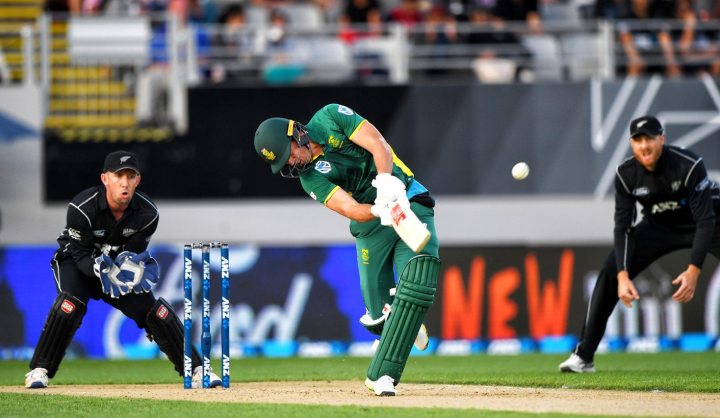Sport
Cricket’s looming law changes: All the important tweaks you need to know

A new Code of Laws will be introduced from October 2017 which will include changes to rules on bat thickness, Mankad dismissals, penalty runs and send-offs. By ANTOINETTE MULLER.
The Marylebone Cricket Club (MCC) confirmed on Tuesday that a new Code of Laws will be introduced later this year following recommendations from the MCC Cricket Committee, who met in Mumbai last December.
MCC has been the owner and arbiter of cricket laws since the 18th century “and continues to be a robust law-maker and guardian of the Spirit of Cricket today”, to quote www.lords.org. Lord’s cricket ground is owned by the MCC.
Among the biggest changes is a limit on bat sizes – something that has been in the spotlight for some time now – which the committee hopes will “redress the battle between bat and ball”.
“The bat size issue has been heavily scrutinised and discussed in recent years,” the MCC’s head of cricket John Stephenson explained in an MCC statement. “We believe the maximum dimensions we have set will help redress the balance between bat and ball, while still allowing the explosive, big hitting we all enjoy.”
Here’s an overview of some of the key changes.
Restrictions on bat sizes
The maximum permitted dimensions of a cricket bat will be 108mm in width, 67mm in depth with 40mm edges. Much like the ball gauge that is currently used to check whether a ball has gone out of shape, a bat gauge will be used to ensure that players follow the rules. Amateur cricketers will be given a grace period, but professionals will have to get with the programme right away. Last year, The Australian reported that a player such as David Warner has a bat almost 18mm bigger than would be allowed by the new law. The recommendation was backed by former players Ricky Ponting, Kumar Sangakkara, Sourav Ganguly and Rod Marsh.
Curbing bad behaviour
Umpires will be given the authority to effectively “red card” a player and award five penalty runs to the opposition. This has largely been done to address bad behaviour in lower levels of the game and will see the introduction of four levels of offences, judged by the umpires.
“We felt the time had come to introduce sanctions for poor player behaviour and research told us that a growing number of umpires at grass-roots level were leaving the game because of it,” Stephenson said.
“Hopefully these sanctions will give them more confidence to handle disciplinary issues efficiently, whilst providing a deterrent to the players.”
It is up to the ICC to decide whether they will accept all law amendments for the international game. The MCC say that they expect this to be the case which means we could see penalty runs awarded more frequently based on the offences.
A level one offence under the new code will include excessive appealing and showing dissent at an umpire’s decision. This will result in a warning and a second level one offence will result in five penalty runs.
Level two offences, including “throwing the ball at a player or making deliberate physical contact with an opponent during play”, will also result in five penalty runs.
Offences in level three, include intimidating an umpire or threatening to assault another player, team official or spectator, will result in five penalty runs as well as removing the player for a set number of overs.
The most serious offences, at level four, include threatening an umpire or committing any act of violence on the field of play and will result in five penalty runs being awarded and the possible permanent removal of the offending player.
While it is unlikely that we’ll see level four offences in the international game, penalty runs for excessive appealing could very well be a punishment for some international sides.
Change to the run-out law and bouncing bats
Batsmen will now be a little safer when attempting a risky run and having to dive to make their ground. Batsmen who dive to make their ground and whose bats “bounce” (as in aren’t touching the ground) will not be out as long as they have grounded their bat or part of their body over the line and they are still heading forward (not attempting another run) – players will be safe.
A change to Mankading
The proposed amendment makes it easier to run out non-strikers who are dozing or backing up too far. It rules that, if a non-striker is out of their crease “from the moment the ball comes into play to the instant when the bowler would normally have been expected to release the ball”, they can be run out. The current law only allows “Mankading” before a bowler enters his delivery stride. Technically, the proposed change means a bowler could attempt a run-out from the top of their run-up.
Gender equality at last
Despite women having played cricket since the 1800s, the laws aren’t written in a way that is neutral to both sexes. For the first time, he/she will be used. “Batsman” will stay the same, though, as it is used in both the men’s and women’s game. DM
Photo: South Africa captain AB de Villiers batting. One Day International Cricket. New Zealand Black Caps v South Africa Proteas. Eden Park, Auckland. New Zealand. Saturday 4 March 2017 © Copyright photo: Andrew Cornaga / www.photosport.nz


















 Become an Insider
Become an Insider